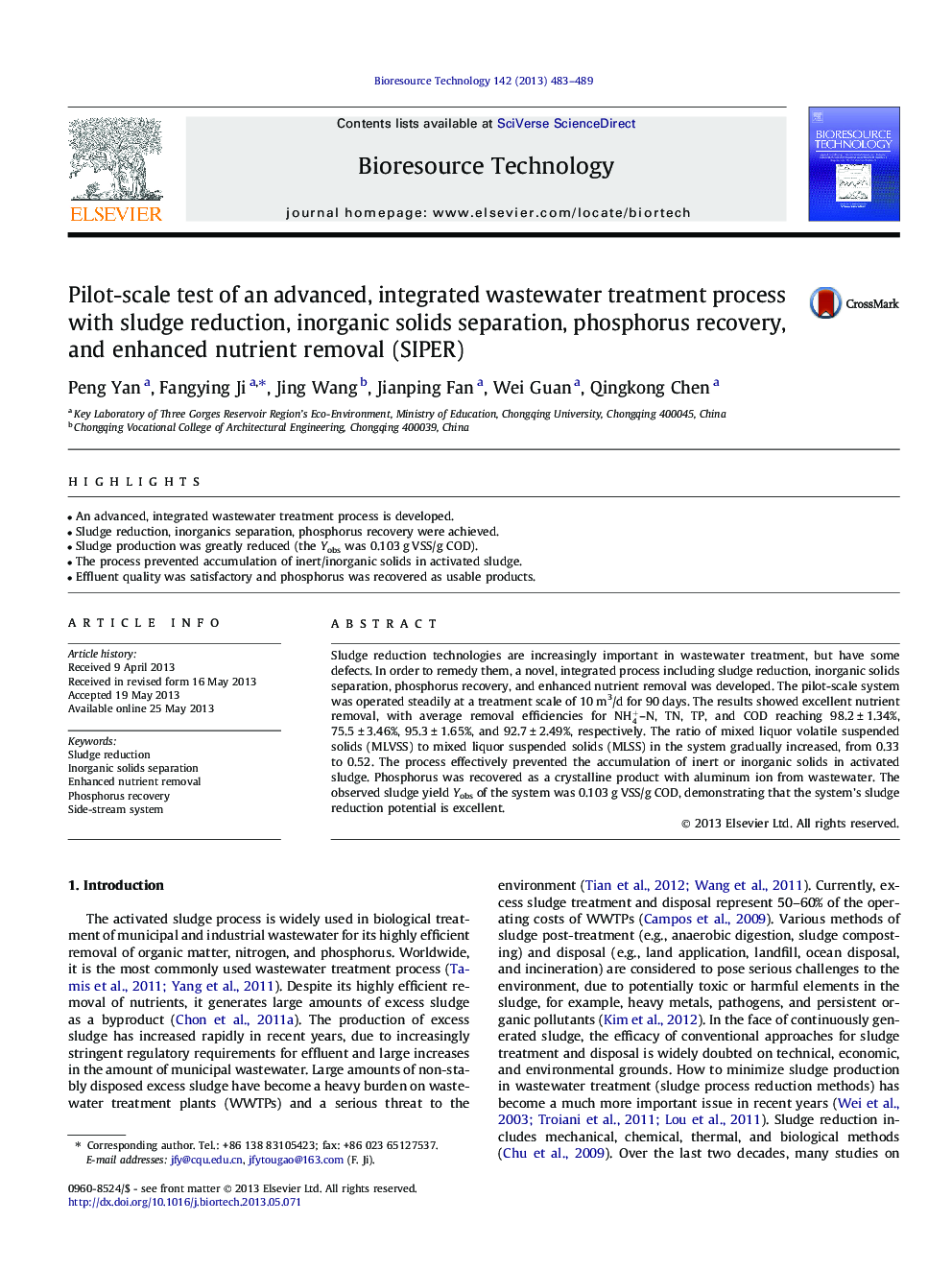| Article ID | Journal | Published Year | Pages | File Type |
|---|---|---|---|---|
| 7081691 | Bioresource Technology | 2013 | 7 Pages |
Abstract
Sludge reduction technologies are increasingly important in wastewater treatment, but have some defects. In order to remedy them, a novel, integrated process including sludge reduction, inorganic solids separation, phosphorus recovery, and enhanced nutrient removal was developed. The pilot-scale system was operated steadily at a treatment scale of 10 m3/d for 90 days. The results showed excellent nutrient removal, with average removal efficiencies for NH4+-N, TN, TP, and COD reaching 98.2 ± 1.34%, 75.5 ± 3.46%, 95.3 ± 1.65%, and 92.7 ± 2.49%, respectively. The ratio of mixed liquor volatile suspended solids (MLVSS) to mixed liquor suspended solids (MLSS) in the system gradually increased, from 0.33 to 0.52. The process effectively prevented the accumulation of inert or inorganic solids in activated sludge. Phosphorus was recovered as a crystalline product with aluminum ion from wastewater. The observed sludge yield Yobs of the system was 0.103 g VSS/g COD, demonstrating that the system's sludge reduction potential is excellent.
Related Topics
Physical Sciences and Engineering
Chemical Engineering
Process Chemistry and Technology
Authors
Peng Yan, Fangying Ji, Jing Wang, Jianping Fan, Wei Guan, Qingkong Chen,
